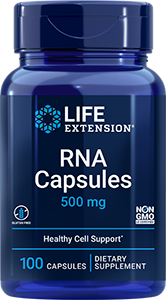| Reports published online on June 15, 2011 in the Journal of Cerebral Blood Flow & Metabolism and on June 30, 2011 in the journal Stroke reveal the findings of Ohio State University professor Chandan K. Sen and his associates of protective effects for tocotrienols against the damage incurred by stroke. Alpha, beta, gamma and delta tocotrienols are four of the eight forms in which vitamin E occurs and, while not abundant in Western diets, are available in supplemental form. In the first article, Dr Sen and colleagues reported the effect of tocotrienols in a canine model of stroke. Twenty dogs were divided to receive 200 milligrams mixed tocotrienols or a placebo daily for ten weeks prior to middle cerebral artery occlusion. Animals that received tocotrienols experienced less overall brain damage, decreased loss of neural connections and better blood flow to the affected area (from collateral vessels) compared with those that did not receive the compounds. “For the first time, in this preclinical large-animal model, we were able to see something that we were never able to see in the mouse or the rat: that if you had a stroke and you had prophylactically taken tocotrienol, the area of the brain affected by the stroke received blood flow from the collaterals,” announced Dr Sen, who is the vice chair for research in Ohio State’s Department of Surgery. “These collaterals, which are an emergency response system, wake up when the blood circulation in the brain is challenged.” In the Stroke article, Dr Sen and coauthors describe experiments with alpha-tocotrienol which uncovered one of three mechanisms by which the compound helps prevent the death of brain cells following stroke. The team had previously shown that tocotrienol protects the brain by blocking the release of toxic fatty acids by an enzyme and inhibiting the activity of a specific gene. The current research demonstrated that tocotrienol activates genes that produce multidrug resistance-associated protein 1 (MRP1), a protein that clears away intracellular oxidized glutathione, which accumulates during stroke and triggers brain cell death. "The protein has the effect of dredging out the toxin," Dr Sen explained. "A significant finding in this work is the recognition that MRP1 is a protective factor against stroke. Thanks to tocotrienol, we were able to identify that path." "Essentially what we are showing with mechanistic explanation is that tocotrienol protects neural cells," he added. "It is anti-neurodegenerative. This form of vitamin E helped us identify three major checkpoints in stroke-related neurodegeneration that were not known before we began testing tocotrienols against neurodegeneration." “Though most of us have no idea if we are at risk for stroke, a sizable population has had a ministroke and is therefore at high risk for a large stroke," he observed. "If I had a ministroke, why would I not take something that would minimize my damage during a stroke? And this is not a drug; it is a nutritional countermeasure. So there are no worries about side effects. Therefore I see it as having prophylactic value.” "Here, a natural nutritional product is simultaneously acting on multiple targets to help prevent stroke-induced brain damage," he concluded. "That is a gifted molecule." |










